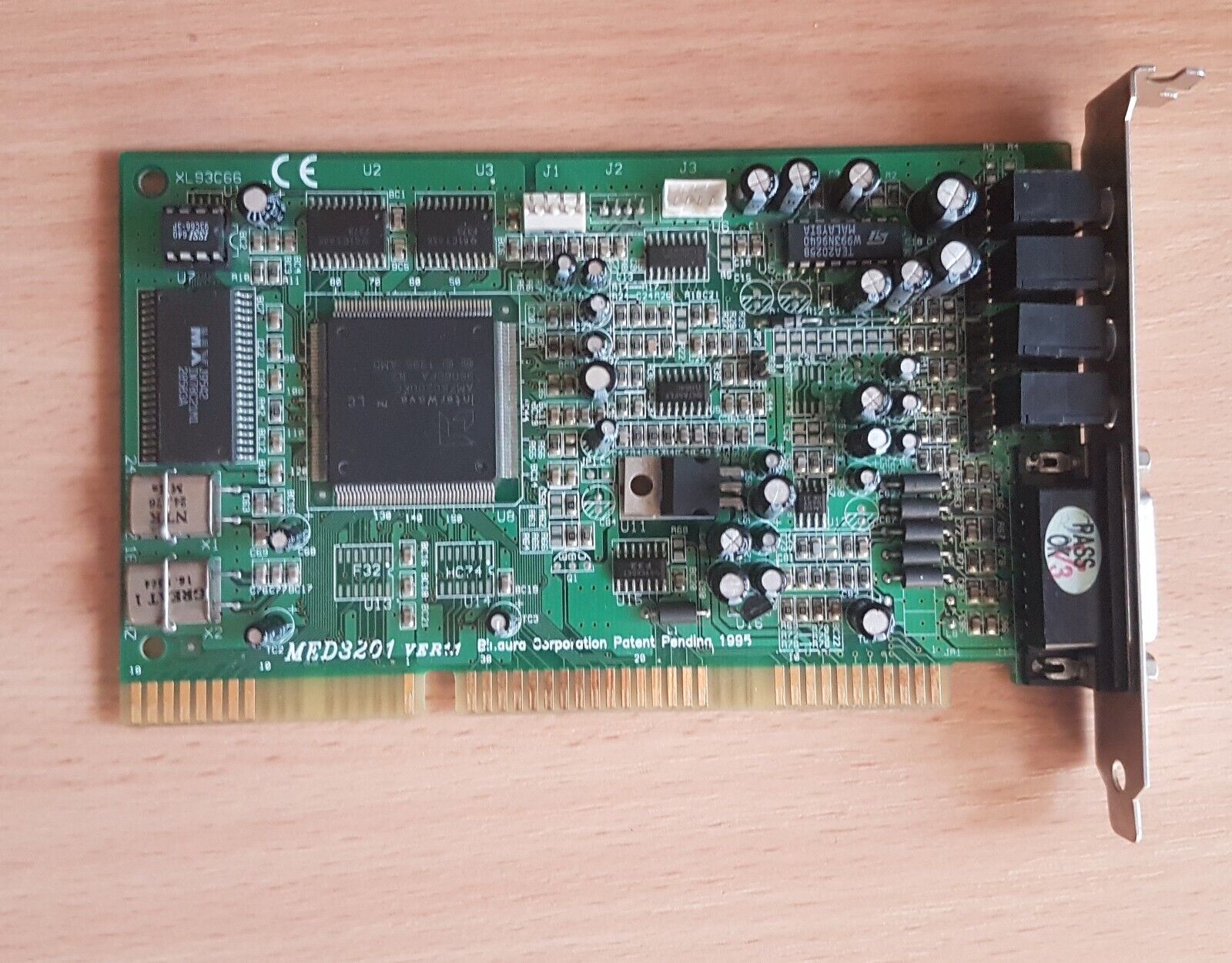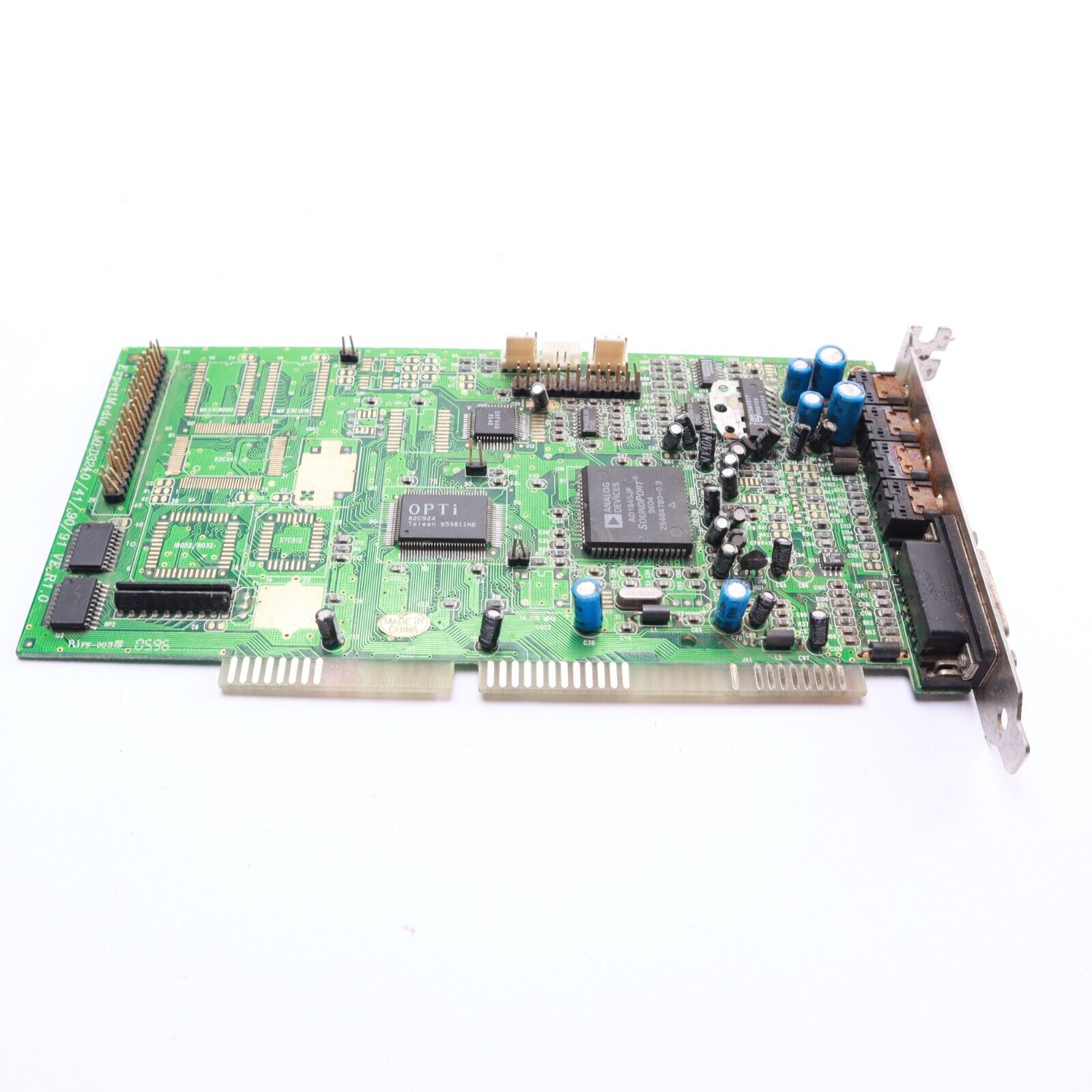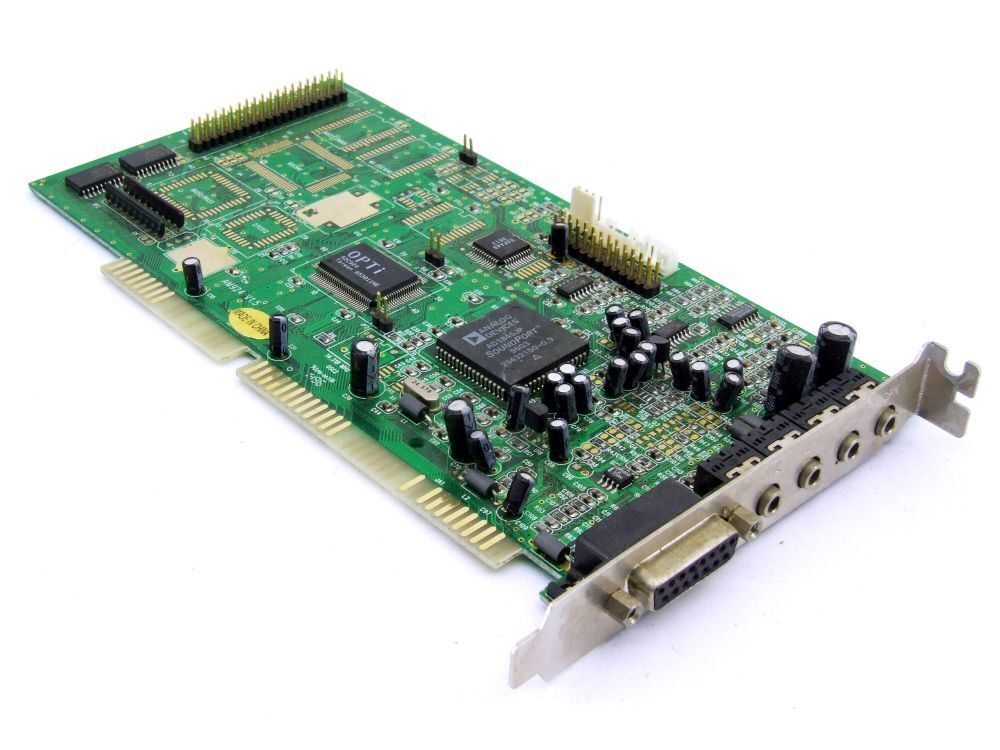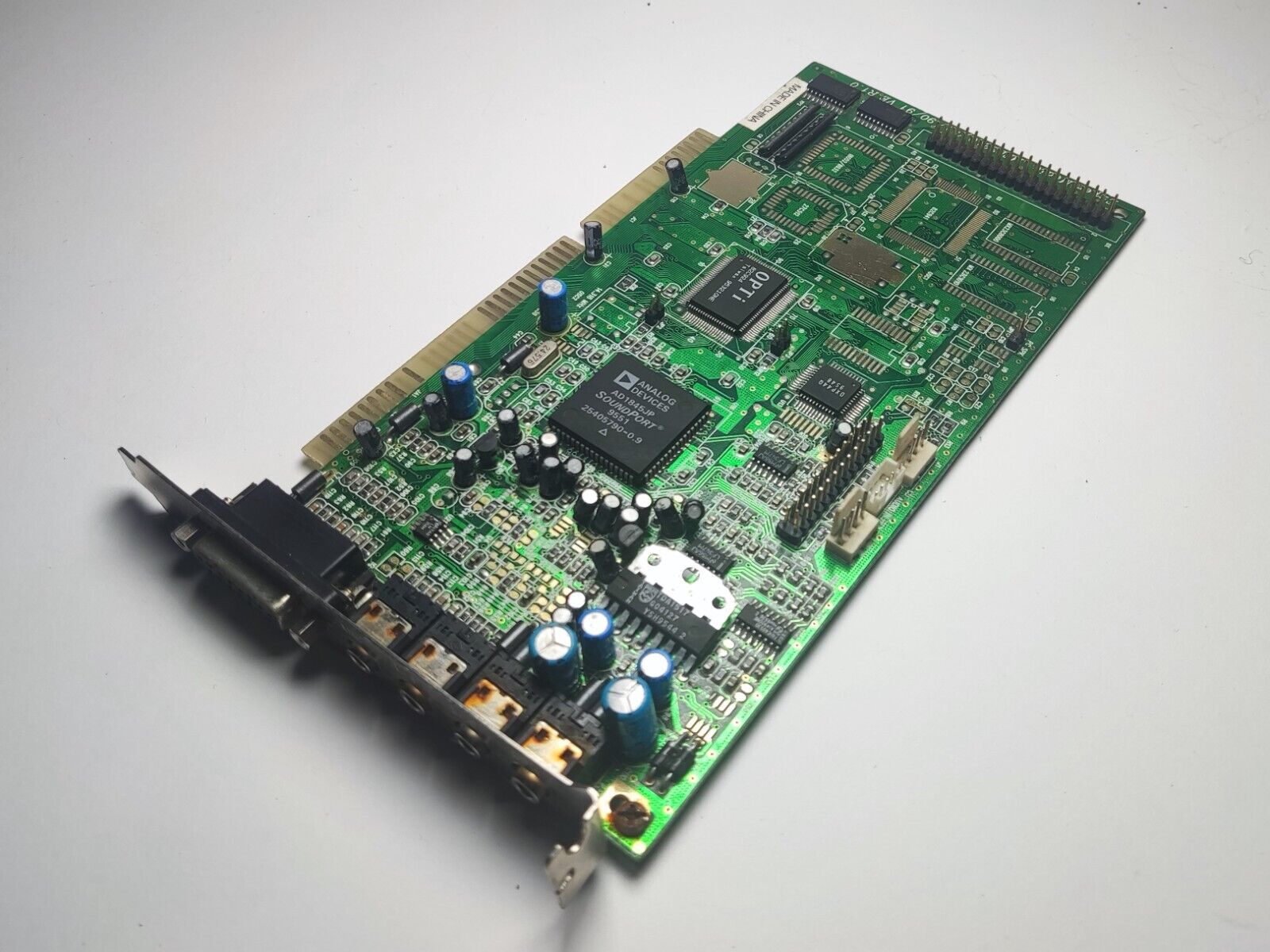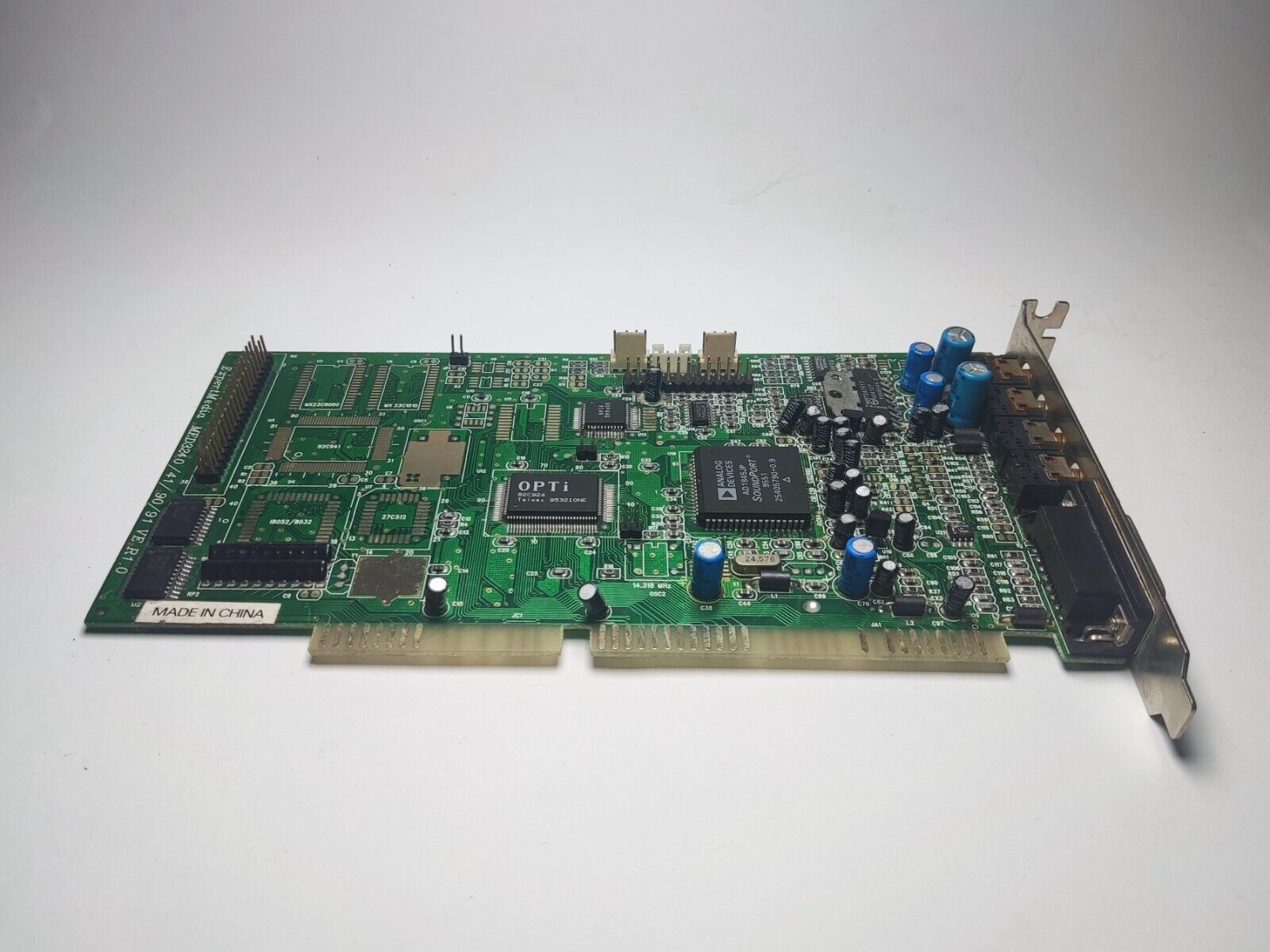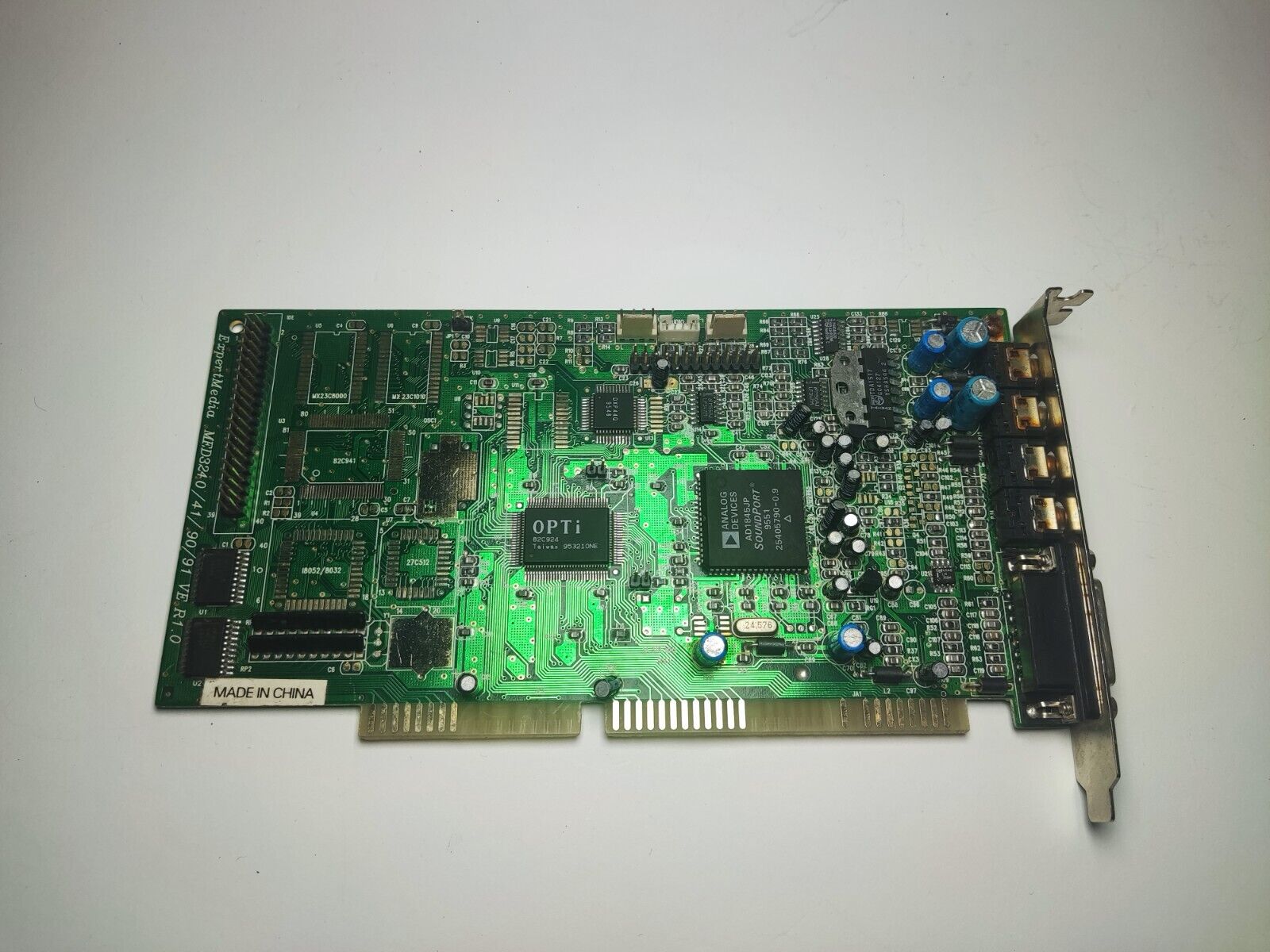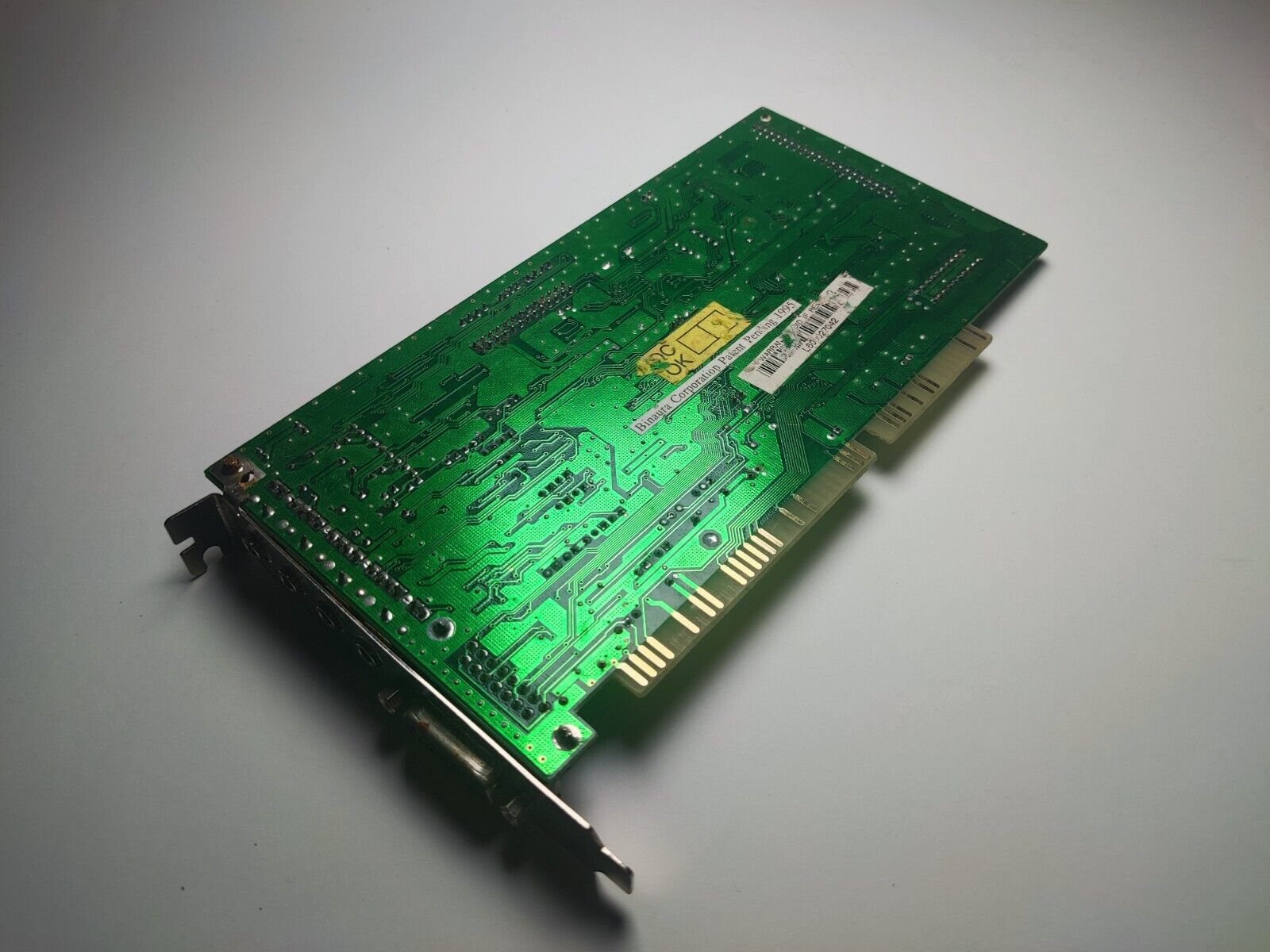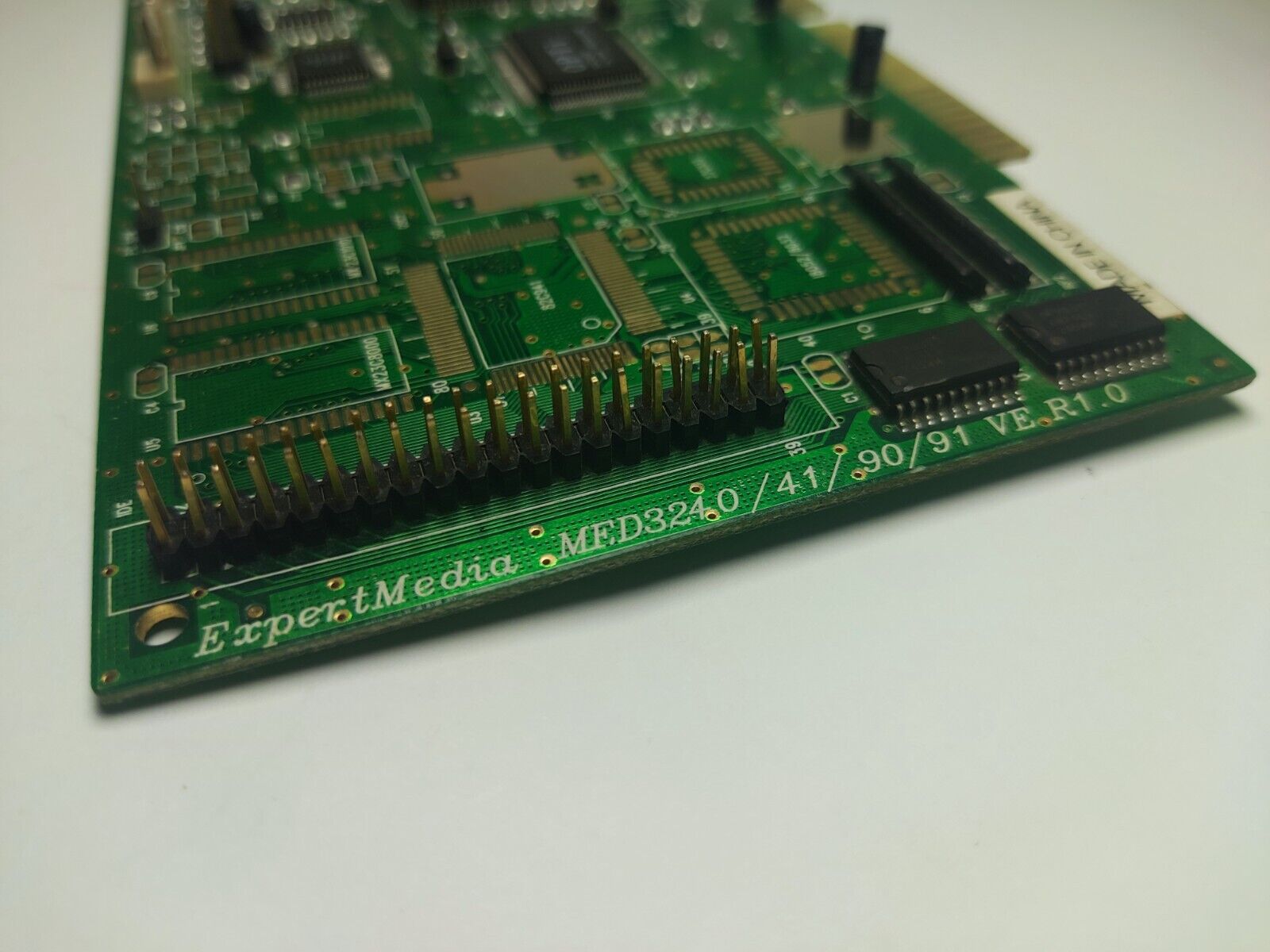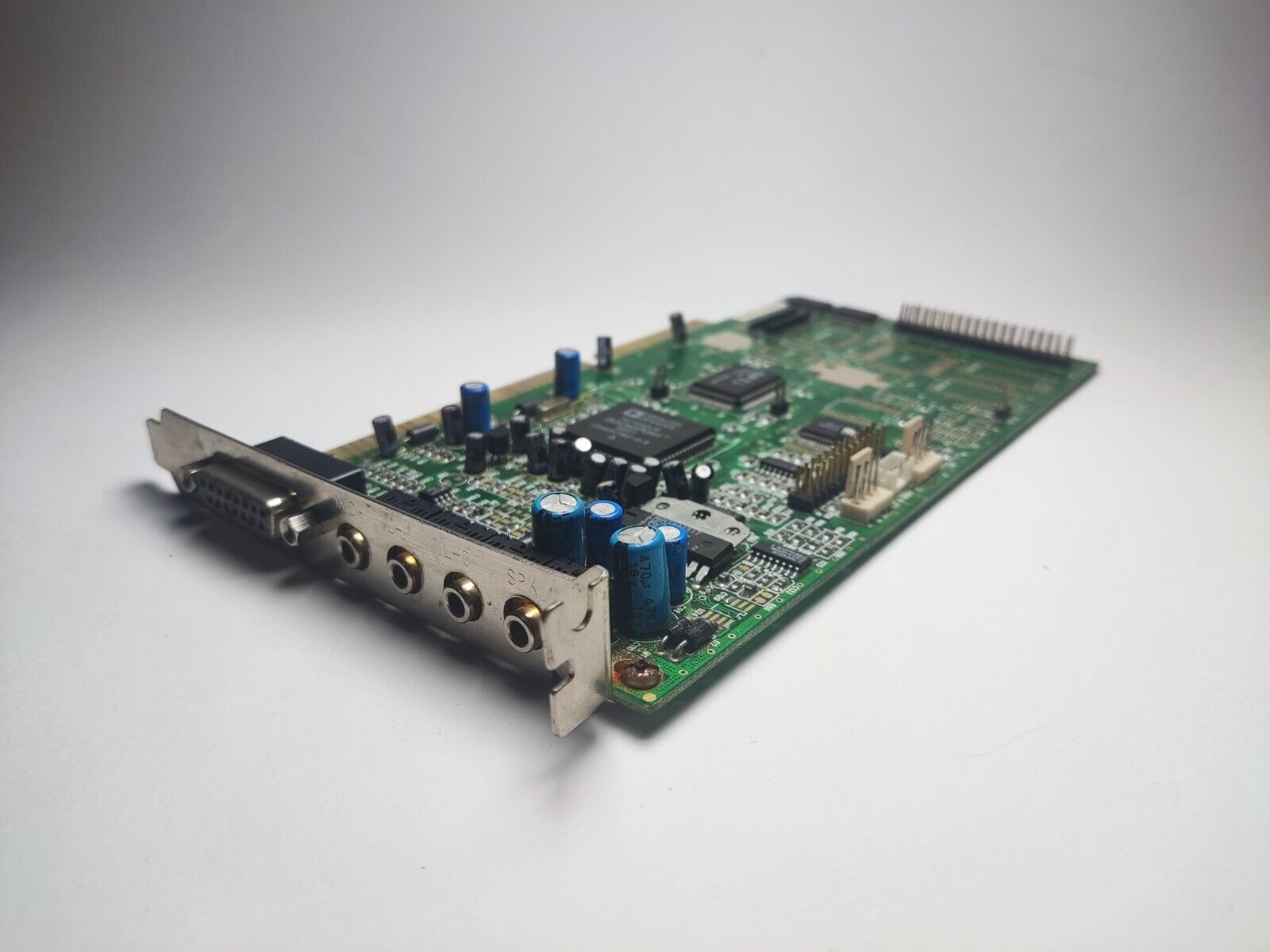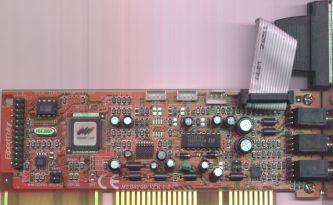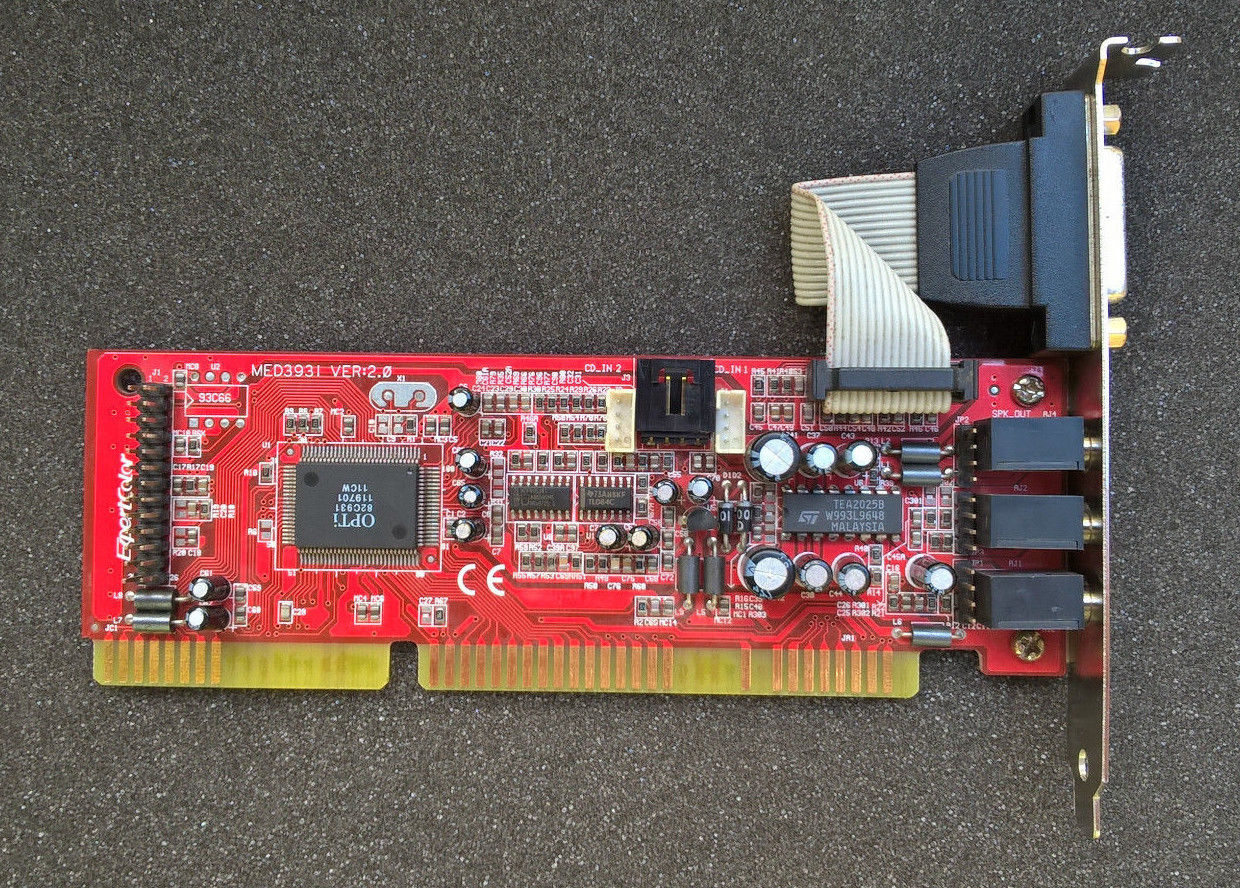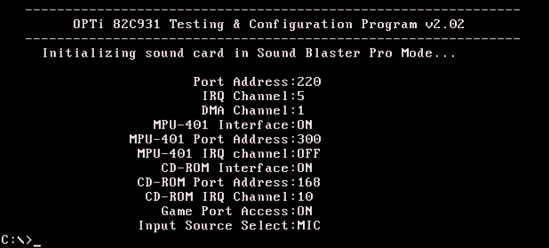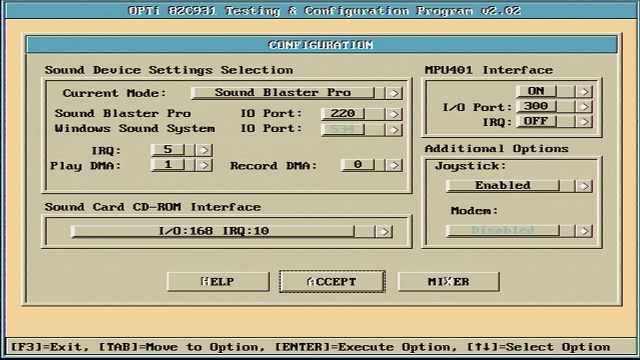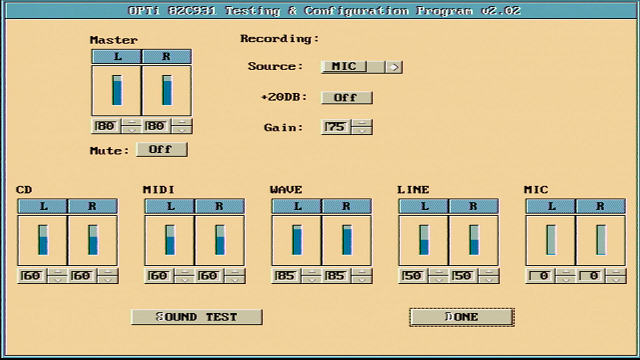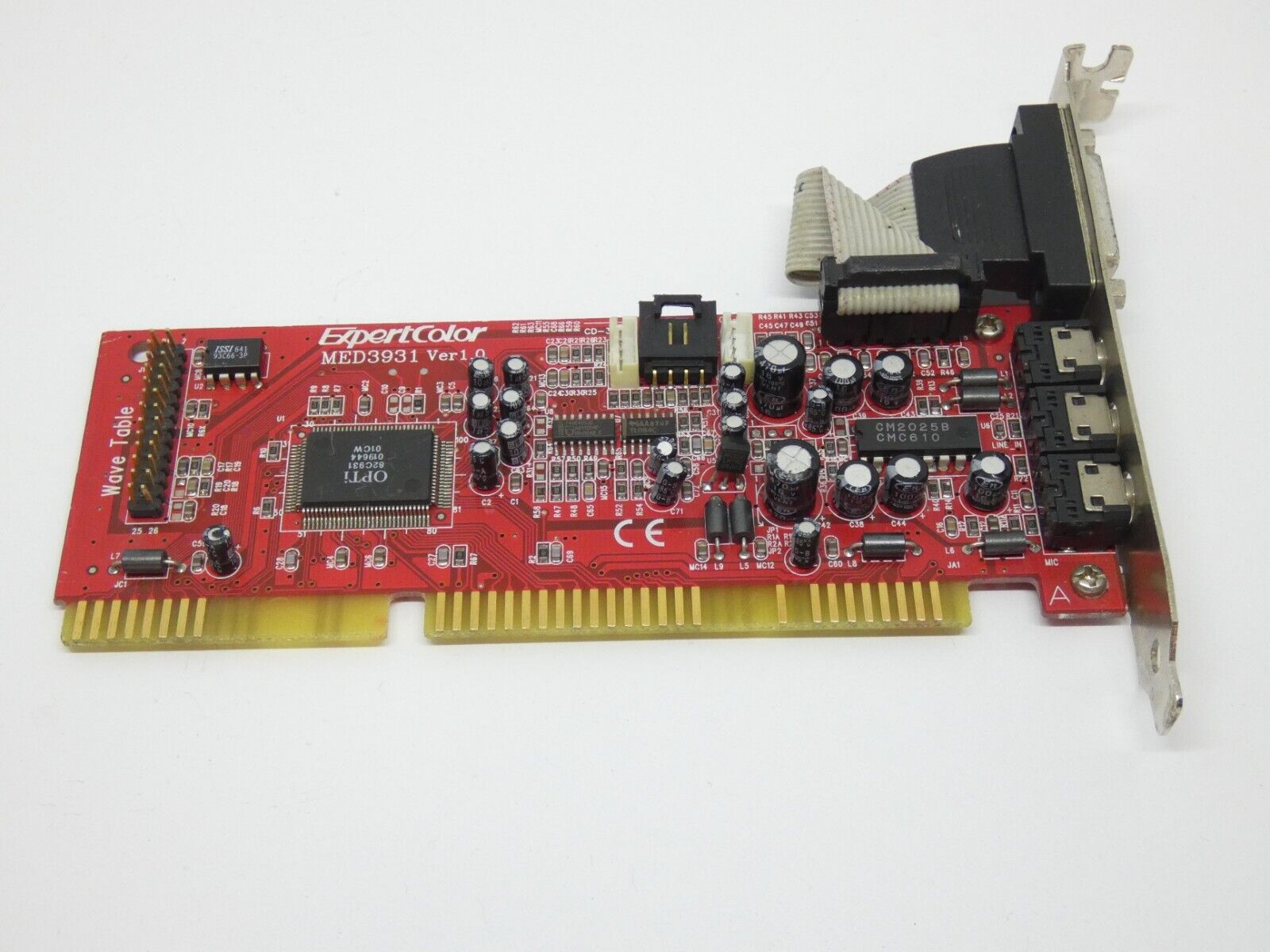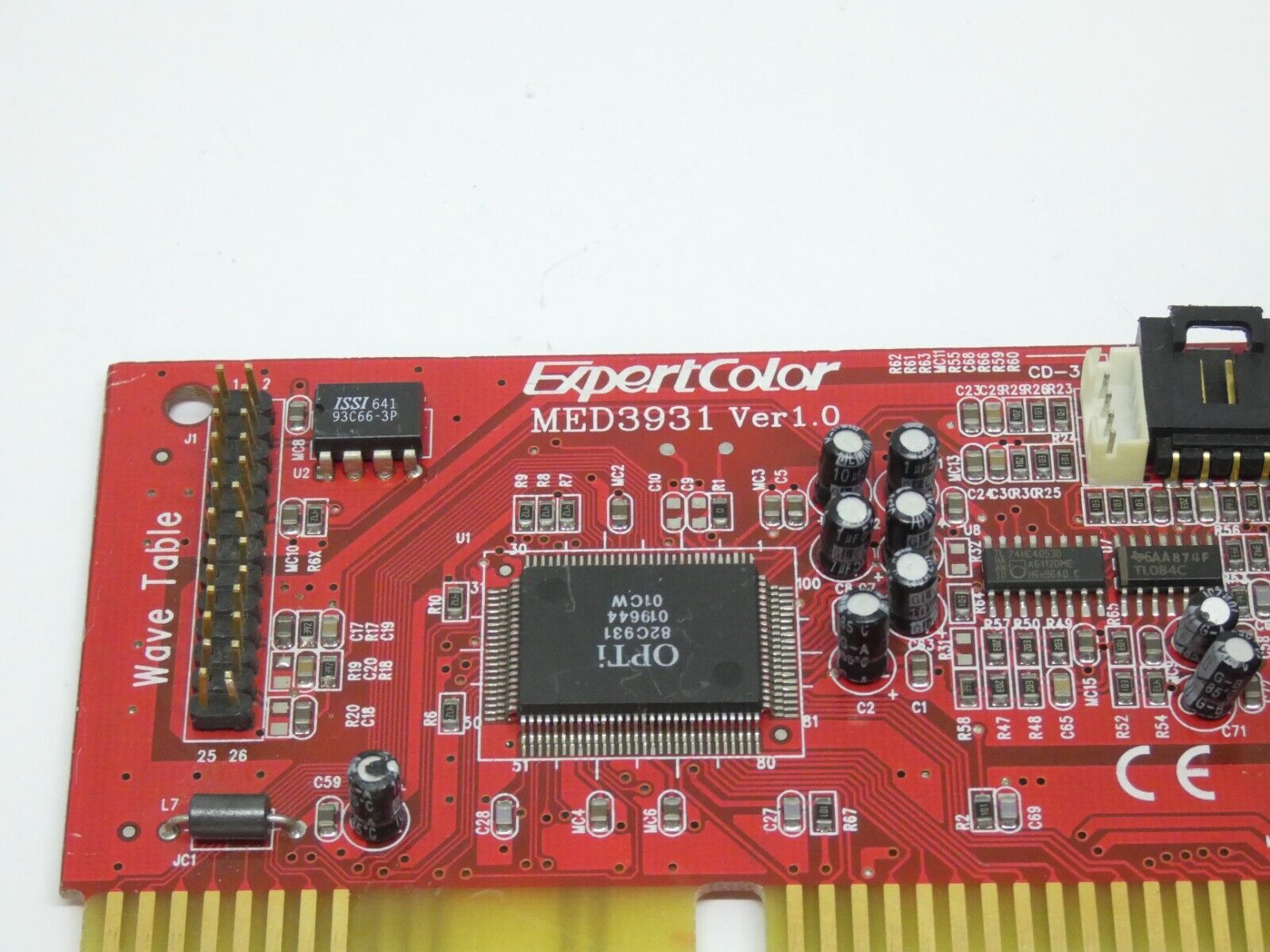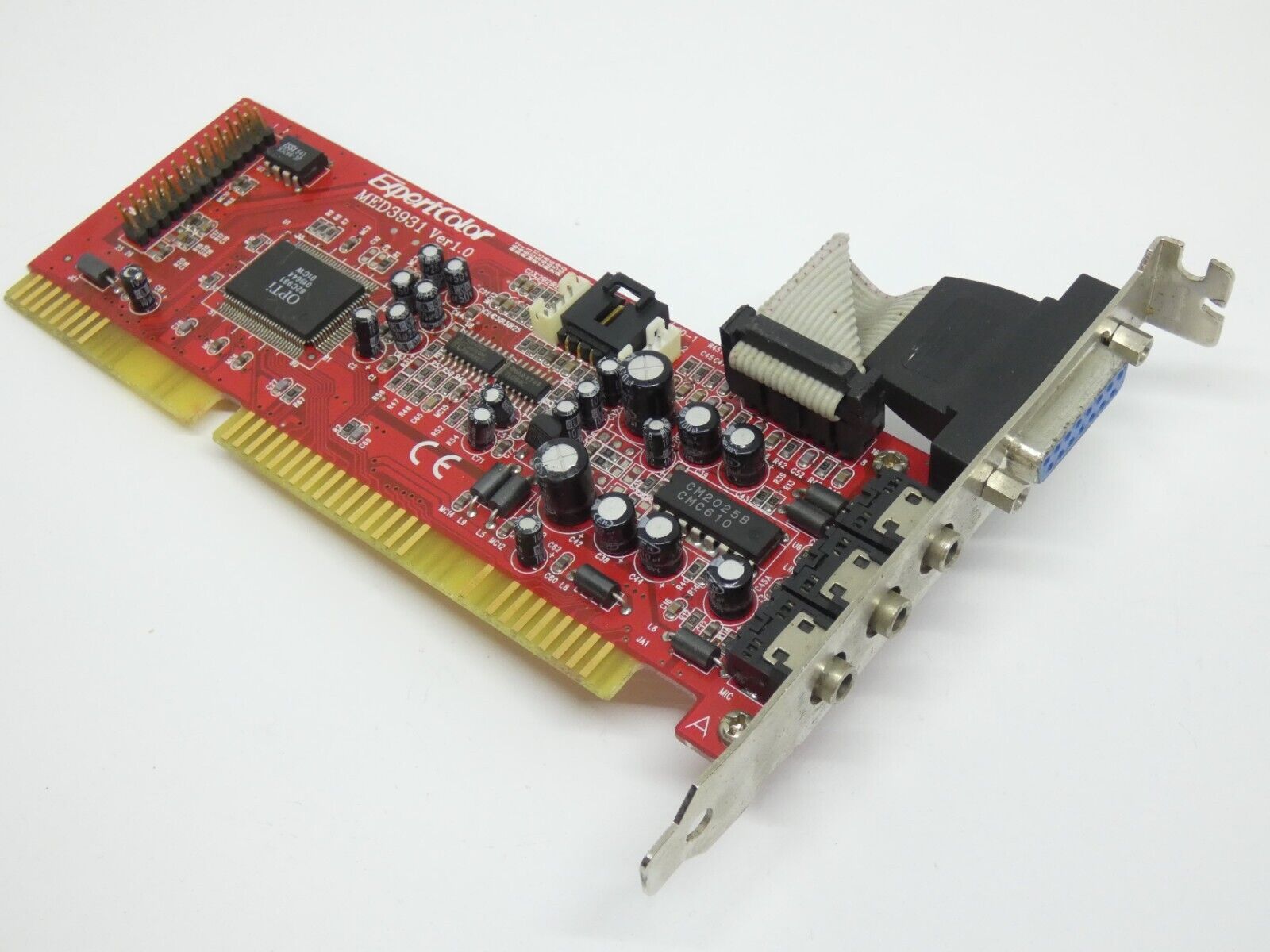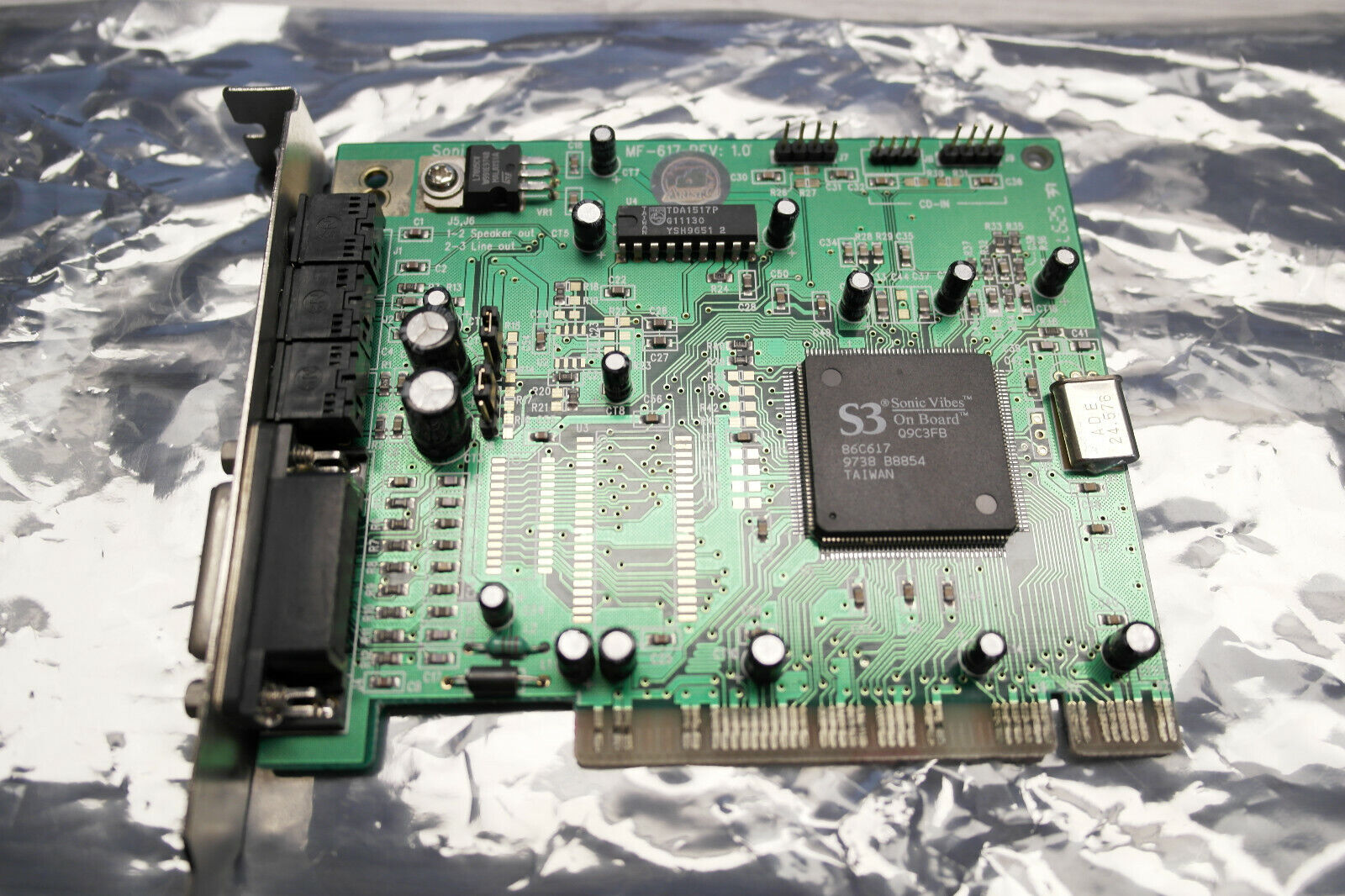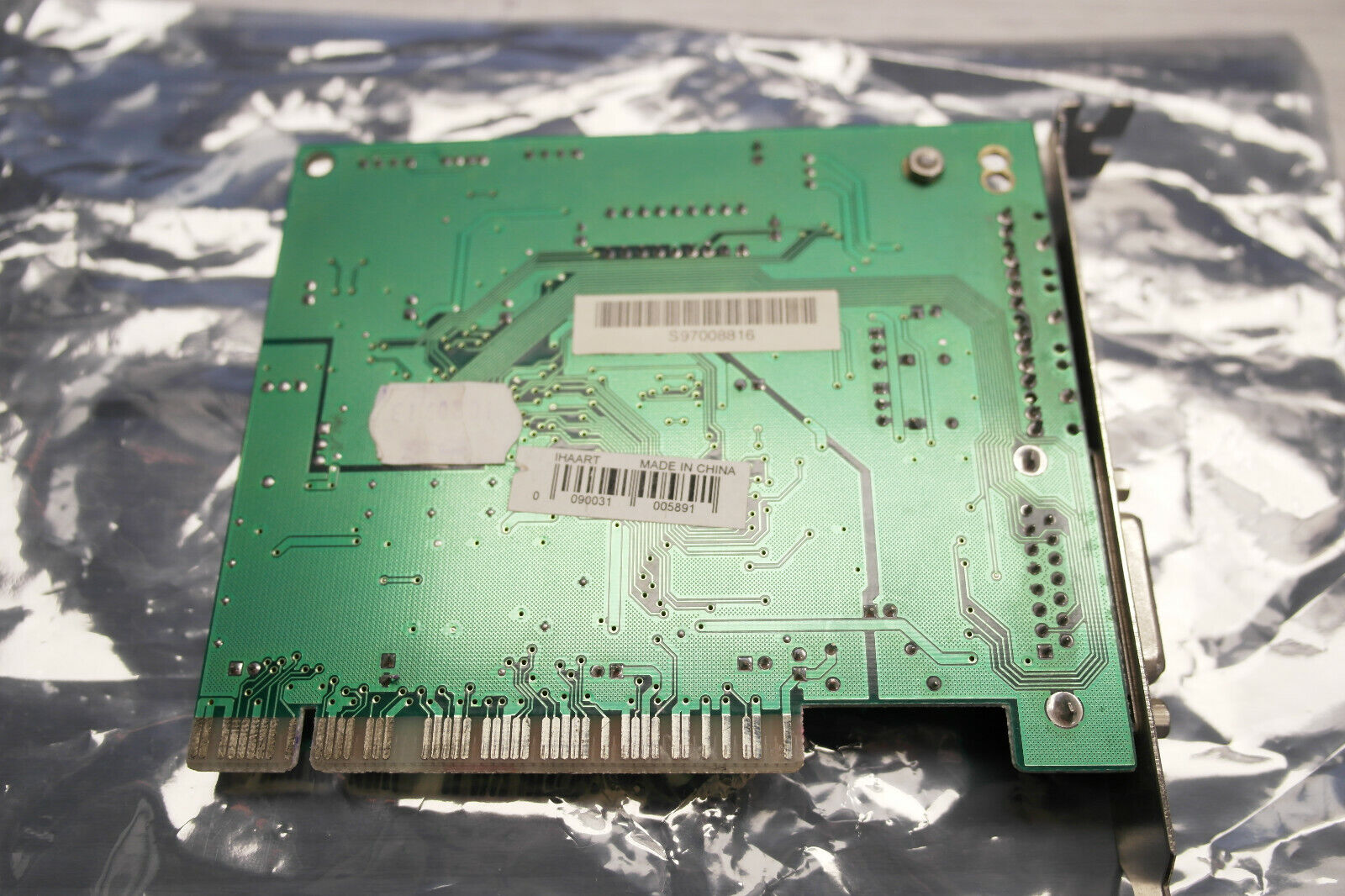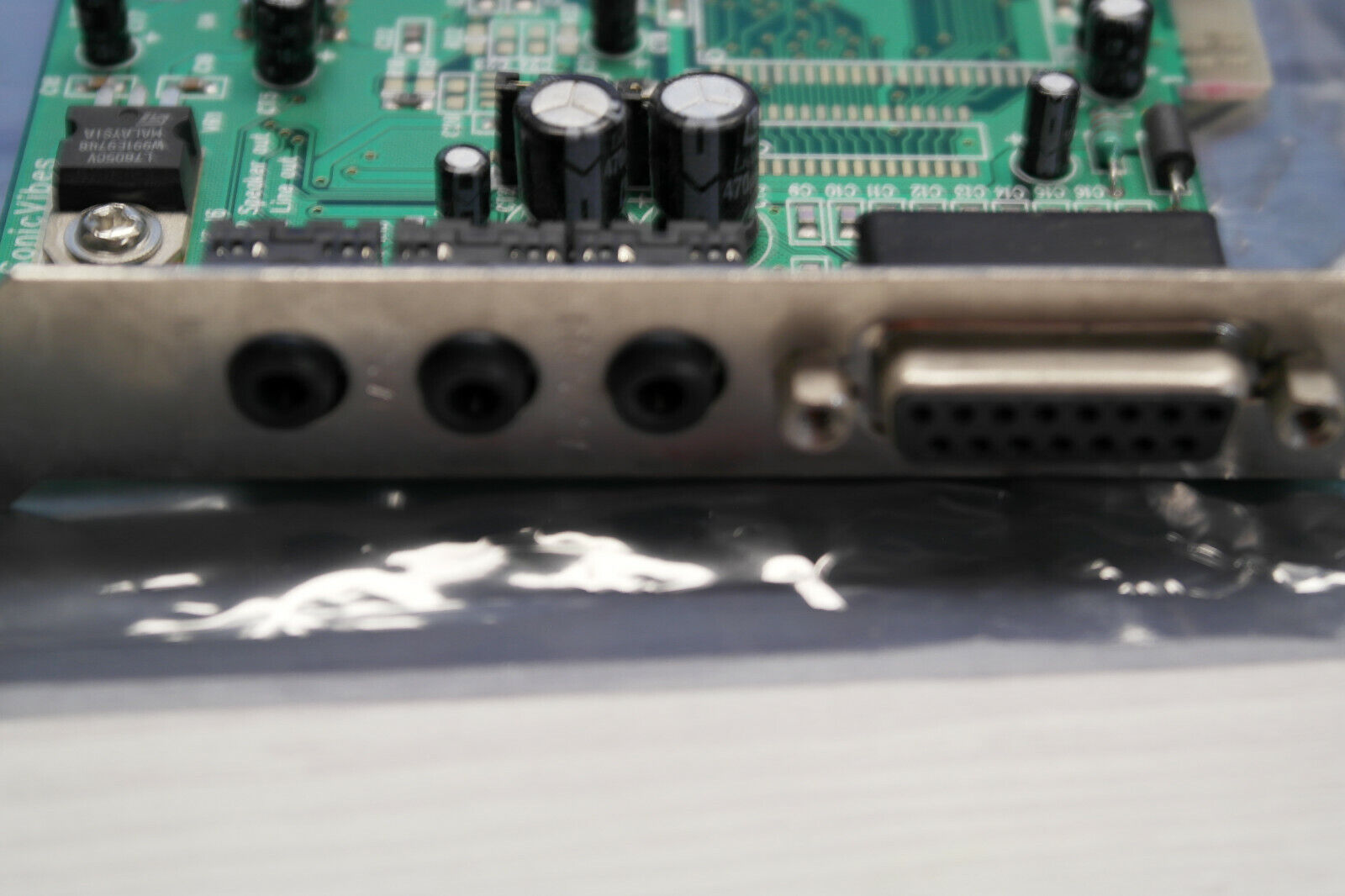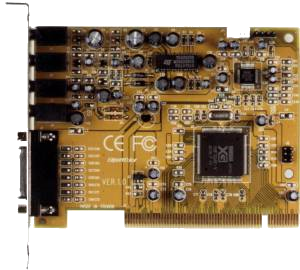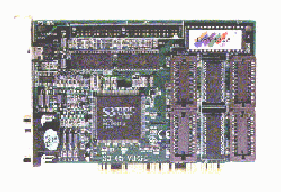 ExpertColor Multimedia Corp.
ExpertColor Multimedia Corp.
ExpertColor was the US division of DataExpert, based in Taiwan. DataExpert was established in 1987 as a specialist in multimedia products. With outlets in Taiwan, Hong Kong, USA, Netherlands and Austria, they promoted their branded line of ExpertColor video accelerators and sound cards designed to meet a wide range of multimedia needs.
It is likely they also used the brand name of ExpertMedia, since the model numbers are very similar.
They also produced a number of motherboards with are not covered at DOS Days: EXP8661, EXP8P61, Aristo 5000 and Aristo 6000 - all Pentium and Pentium Pro boards.
Their head office was located at 990 Richard Avenue, Suite #118, Santa Clara, CA 95050, USA. Tel: (408) 727-9888, Fax: (408) 727-6088. Email: info@expertcolor.com, Web Site: www.expertcolor.com
On this page are the following models:
| Sound Cards | Graphics Cards |
|---|---|
| MED3139 (199x) MED3201 (1995) MED3240 (1995) MED3700/MED3719 (1996) MED3931 (1996) MED6617 (?) MED6724 (1999/2000) |
Canarias 2000 (CA2220/CA2212) (1995) Canarias 3000 (CA3224/3240) (1995) Laguna 5000 (1995) DSV3365 / ViRGE 3000 (1997) DSV3365 v2 / Trio 2000 (1997) DSI5326 (1997) DSV5357 (1998) DSV5366 3DVenus (1998) DSV5390 (1998) |
Sound Cards
MED3139..
|
|
|
MED3700 / MED3719
|
|
|
MED6724
|
Graphics Cards
|
|||||||||||||||||||||||
| Resolution | 640x480 | 640x480 | 800x600 | 1024x768 | 1280x1024 | 1600x1200 |
|---|---|---|---|---|---|---|
| Colors | 16\16.7M | 256\32K\64K | 256\64K\16.7M | 256\64K\16.7M* | 16\256\32K* | 256 |
| VS(Hz) | 60\72\75\85\120 | 60\72\75\85\120 | 60\72\75\85 | Int60\72\75 | Interlaced | 60\75 |
Software Drivers Included :
- MediPro Power Tool : Multi-Language version
Instant "On-the-fly" Resolution and Refresh Rate change. Detect or select Monitor Type (DDC1/2B) & Monitor Centering. Multi-language Auto-Translation under Windows/ Windows® 95 Hot Key for Zoom-in, Zoom-out, Desktop Size & Screen-off. - Windows NT/DOS/AutoCad/Microstation
- Software XING MPEG Utility for MPEG Playback
- Hardware MPEG-1 Video Decoder Module
- Remote Control Kits Optional.
- MPEG + TV Tuner Optional.
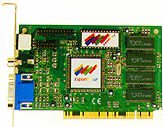 Canarias 2000 (CA2220/2212)
Canarias 2000 (CA2220/2212)
![]()
![]()
![]()
![]()
Introduced: 1997
Chipset: ExpertColor CANARIAS 2000 2D/Soft3D
Interface: PCI
Memory: 1 MB EDO (upgradable to 2 MB)
A solution for Video Conferencing and MPEG-2 Video Stream Playback.
- Design based on ExpertColor CANARIAS 2000 2D/Soft3D Graphics/Video Accelerator.
- Supports 1MB EDO memory upgradable (model CA2212) to 2MB EDO (model CA2220).
- Integrated 64-bit GUI Accelerator, Soft Direct3D Acceleration with 200Mhz RAMDAC.
- Display resolution up to 1600x1200 x 8 x 60Hz, 1280x1024 x 16 x 75Hz, 1024x768 x 24 x 85Hz, 800x600 x 24 x 85Hz and 640x480 x 24 x 85Hz
- Soft3D acceleration of 3D games using Direct3D
- VESA DDC2B, DPMS support.
- Patented Flicker-Free Technology includes TV Encoder for True TV output
- Patented technology significantly reduces flicker and improves text and video output to interlaced TV monitors. It supports vertical underscan via hardware scaling to allow 640x480 resolution modes to fit onto NTSC displays and 800x600 modes to fit onto PAL display.
- Supports H/V interpolation with edge smooting for video up scaling and filtering of video for quality down scaling.
- Simultaneous Dual and Multiple Display Hardware Support
- Simultaneous dual display including graphics on CRT and video playback on TV
- 2 x display hardware support
- Video Acceleration for MPEG & Live Video
- Direct Draw/Active Movie MPEG playback using hardware double buffering, scaling, overlay, CSC, and chroma key
To download drivers for this card, go to the Downloads page.
CANARIAS 2000 is a PCI Bus 2.1, Entertainment PC 97 compliance, 64-bit Multimedia Accelerator solution with TV-output feature to deliver robust TV, movie, presentation and gaming experiences. It supports VGA, NTSC/PAL TV-output with patented flicker-free technology for 640x480 60Hz output to NTSC and 800x600/640x480 50Hz output to PAL TV system. It supports output to VGA, composite, and S-Video connectors simultaneously. A VGA output to VGA monitor, an AV port and a composite, and S-Video port for TV display are provided for its multi-purposes output capabilities.
It supports 2 hardware Video Windows capabilities for 2 simultaneous different display at the same time with video quality enhanced by Hardware Vertical Interpolation for jagged edge smoothing and filtering. It supports playback of MPEG-1, VCD 2.0 Interactive titles, MPEG 2 Video stream, live video and video capture format.
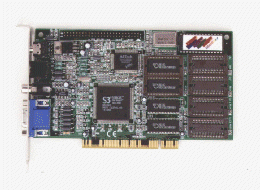 Canarias 3000 (CA3224/3240)
Canarias 3000 (CA3224/3240)
![]()
![]()
![]()
![]()
Introduced: 1995
Chipset: S3 ViRGE 3D
Interface: PCI
Memory: 2 MB EDO (upgradable to 4 MB)
S3 ViRGE 3D Graphics Accelerator Card with TV-out Multimedia
Play your games and see your applications on a big TV screen !
Windows® 95 Plug & Play Accelerator Card with support for DDC1/DDC2 monitor.
Windows® 95 DirectDraw and Direct3D Protocol for 2D & 3D Windows Acceleration.
ExpertColor MediPro Power Tool for DOS/Windows3.1 / Windows95 / WindowsNT.
- Based on S3 ViRGE 3D, it supports quality VGA/TV conversion with anti-flicker filter for stable display on TV screen.
- Supports 2MB Video Memory upgradable to 4MB.
- Maximum resolution of 1600x1200 at 256 colors with advanced texture mapping for high quality 3D display.
- Provides both output jack for composite (AV) and S-video signals as well as a MPEG-1 audio-out port.
- Supports multiple TV Output Standards- NTSC, NTSC-ELA, PAL-B/G/H/I.
- Optional Remote Control Kits, and S3-CP3 MPEG-1 hardware module and TV Tuner module upgrade.
To download drivers for this card, go to the Downloads page.
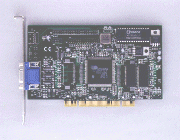 Laguna 5000
Laguna 5000
Introduced: 1995
Chipset: Cirrus Logic CL-GD5464
Interface: PCI
DAC Speed: 230 MHz
Memory: 2 MB RDRAM (expandable to 4 MB)
3D Graphics Accelerator with RAMBus memory
Experience THREE simultaneous Video Displays on the screen!
- PCI 2.1 Bus Master 64-bit 2D/3D Rambus Graphics and Video Playback Acceleration.
- Design based on the Cirrus Logic Laguna GD-5464 (Int. 230Mhz DAC) Graphics Accelerator.
- On-board 2 or 4MB RAMBus (RDRAM) Memory.
- Supports 3D graphics capability for Perspective-texture mapping, Bilinear/Trilinear-filtering,
- Single-pass lighting, Alpha bending, fog, transparency, Mip mapping and Gouraud-shading,
- Supports Single-pass X, Y interpolation scaling, YUV-to-RGB conversation for smooth full-screen and full-motion video playback including scalable MPEG-2 Video Window.
- Supports DDC level 2B-compliant monitor signaling, DPMS Power saving feature and VESA BIOS Extension 2.0.
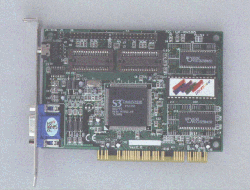 DSV3365 v2 / Trio 2000
DSV3365 v2 / Trio 2000
Introduced: 1997
Chipset: S3 Trio64V2/DX
Interface: PCI
Memory: ?
- Design based on S3 TRIO64V2/DX Graphics and Video Accelerator.
- Glueless PCI 2.1 Local Bus Support.
- Offers double buffering for high-quality 2D scrolling and sprite plane.
- Supports horizontal and vertical interpolation for smooth upscaling.
- Supports Advanced Playback capabilities for high-quality hardware-assisted video playback (up to 1024x768x16bits/pixel)
- Optional Remote Control Kits, and MPEG-1 hardware module and TV Tuner module upgrade.
- Bundled with Software MPEG XING( for popular playback format and ExpertColor( MediPro Power Tool for easy display configuration.
To download drivers for this card, go to the Downloads page.
 DSI5326
DSI5326
![]()
![]()
![]()
Introduced: 1997
Chipset: SiS 6326
Interface: AGP 2x
Memory: 4 MB or 8 MB
Memory Speed: -
The DataExpert DSI5326 was built around the SiS 6326 graphics accelerator.
- Supports Turbo Queue (Software Command Queue in off-screen memory) architecture to achieve extra-high performance
- Built-in Direct Draw Accelerator
- Supports memory-mapped, zero wait -state, burst engine write
- Built-in 64*32 CRT FIFOs to support super high resolution graphics modes and reduce CPU wait-state
- Built-in 32-bit floating point format VLIW triangle setup engine
- Peak Polygon rate: 800K Polygone/sec @ 50 pixel / polygon with Gouraud shaded, point-sampled, linear and bilinear texture mapping
- Supports solid, flat and Gouraud shading
- Supports stipple patterns, stipple alpha, linear and ROP
- Supports Z-buffer and alpha buffer
- Supports point-sampled, linear and tri-linear texture filtering
- Supports MIP structure texture
- Supports texture transparency, blending, wrapping, mirror and clamping
- Supports fogging, alpha blending and primitive transparency
Table of display resolutions, colors and refresh frequency :
| Resolution | Colors | VS(Hz) |
| 640 × 480 | 256/64K/16.7M | 120/120/120 |
| 640 × 480 | 256/64K/16.7M | 120/120/120 |
| 800 × 600 | 256/64K/16.7M | 120/120/75 |
| 1024 × 768 | 256/64K/16.7M | 120/120/120 |
| 1280 × 1024 | 256/64K/16.7M | 75/75/43 |
| 1600 x 1200 | 256 | 75 |
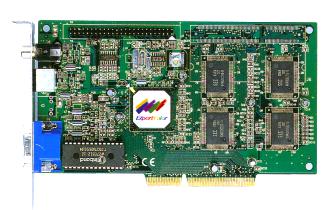 DSV5357
DSV5357
![]()
![]()
![]()
![]()
Introduced: 1998
Chipset: S3 ViRGE/GX2
Interface: AGP 2x
Memory: 2 MB or 4 MB SGRAM
Memory Speed: 83 MHz/100 MHz
The DataExpert DSV5357 was built around the S3 ViRGE/GX2 graphics accelerator.
- 66Mhz AGP Baseline High-performance 64-bit 2D/3D graphics engine with TV-out feature.
- Support SGRAM 2MB Video Memory or SGRAM 4MB Video Memory up to 83/100Mhz.
- Multi-Language version ExpertColor MediPro Power Tools for Easy-to-use & Softeare MPEG to support for popular playback CD-ROM titles within Windows.
- SmartFilter Technology & Parallel Processing Perspective Engine for Blazing 3D Performance.
- Enhance memory bandwidth management for High Performance 2D Graphics Acceleration.
- Hardware Horizontal & Vertical Interpolation for Smooth Upscaling and Motion Video.
- Advanced Playback Capabilities for High-quality hardware-assisted video playback.
- Simultaneous Display with integrated TV-out feature for NTSC/PAL TV system.
ViRGE GX2 Advanced 3D Technology:
- Advanced MIP mapping and tri-linear filtering to deliver images that are free of annoying visual artifacts such as "sparkle" and "jaggies."
- Transparency to enable realistic rendering of glass, water and plastic objects.
- Atmospheric effects such as fog and depth cueing to enable the rendering of real-world environments.
- Z-buffering to speed the removal of hidden surfaces for improved performance and visual quality.
- Perspective Correction & Video texture mapping.
Table of display resolutions, colors and refresh frequency :
| Resolution | Colors | VS(Hz) |
| 640 × 480 | 16/16.7M | 60\72\75\85 |
| 640 × 480 | 256K/32K/64K | 60\72\75\85 |
| 800 × 600 | 256/64K/16.7M | 60\72\75 |
| 1024 × 768 | 256/64K/16.7M* | 60\66\70\72\75 |
| 1280 × 1024 | 16/256/32K* | 60\72\75 |
| 1600 x 1200 | 256/32K* | 60\70 |
*4 MB memory installed
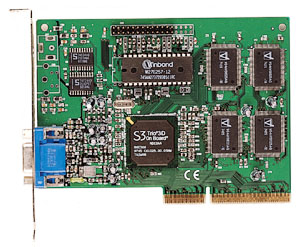 DSV5366 3DVenus
DSV5366 3DVenus
![]()
![]()
![]()
Introduced: 1998
Chipset: S3 Trio3D
Interface: AGP 2x
Memory: 2 MB or 4 MB SGRAM, or 4 MB SDRAM
The DataExpert DSV5366 was built around the S3 Trio3D graphics accelerator.
2D/3D Graphics Features:
3D API Compatibility:
|
Connectors:
Compatibility:
Video Playback Features:
|
Table of display resolutions, colors and refresh frequency :
| Resolution | Colors | VS(Hz) |
| 640 × 480 | 256/64K/16.7M | 200\200\200 |
| 800 × 600 | 256/64K/16.7M | 160\160\160 |
| 1024 × 768 | 256/64K/16.7M | 120\120\120 |
| 1152 x 864 | 256/64K | 120\120\120 |
| 1280 × 1024 | 256/64K | 100\100 |
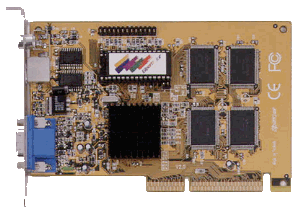 DSV5390
DSV5390
![]()
![]()
Introduced: 1998
Chipset: S3 Savage3D
Interface: AGP 2x
Memory: 4 MB or 8 MB
The DataExpert DSV5390 was built around the S3 Savage3D graphics accelerator.
2D/3D Graphics Features:
TV-out:
|
Next Generation in Image Quality:
Connectors:
Motion Video Architecture:
|
Table of display resolutions, colors and refresh frequency :
| Resolution | Colors | VS(Hz) |
| 640 × 480 | 256/64K/16.7M | 60\72\75\85\160 |
| 800 × 600 | 256/64K/16.7M | 56\60\72\75\85\160 |
| 1024 × 768 | 256/64K/16.7M | 60\70\75\85\130 |
| 1280 × 1024 | 256/64K/16.7M* | 60\75\85\100 |
| 1600 × 1200* | 256/64K/16.7M* | 60\75\85 |
| * 8MB Memory Installed | ||
